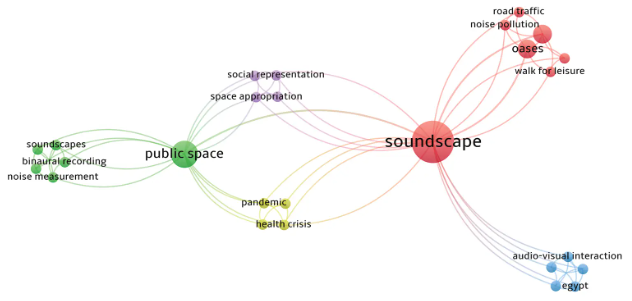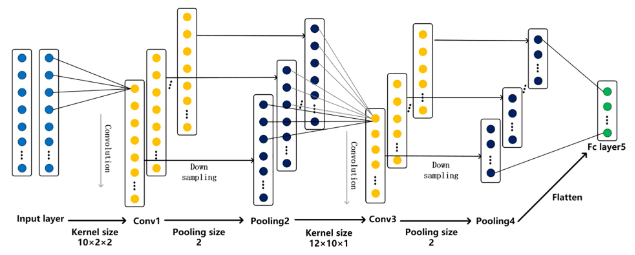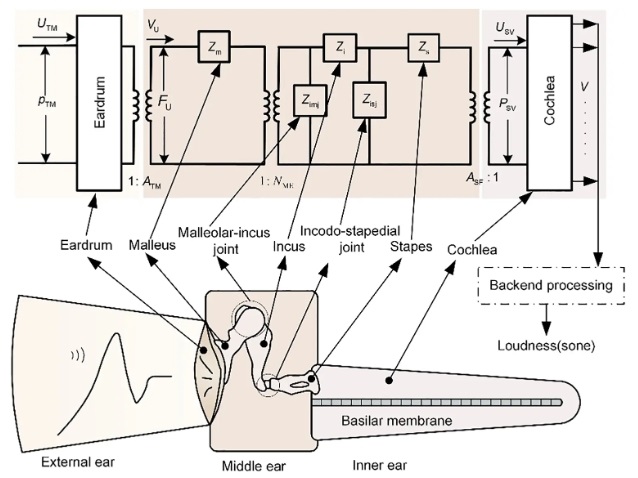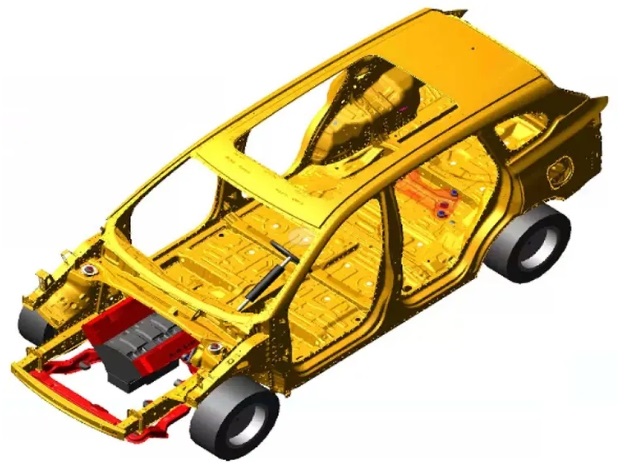Sound power of onshore wind turbines and its spectral distribution
Abstract
Wind turbines (WTs) have grown substantially in size and electric capacity over the past decades. The sound power of WTs was reported to increase over time in relation to their electric power and thus over time WTs have become louder. Because of the expected ongoing growth of onshore wind energy, a greater number of people will be living close to wind farms. This sustains the need for sound reduction. Sound reduction measures, such as serrations, reduced tip speed and low noise modes, may counteract the development of higher sound power levels from ever bigger WTs. To investigate this, the sound production of WT types over the last decades is analyzed in relation to their size and electric power and the application of sound reduction measures. The analysis includes the broad band A-weighted and low frequency sound power levels as well as more detailed spectral distributions. Results show that the sound power level of wind turbines above 3 MW on average increases less with size than smaller turbines did. This is due to a lower increase in blade tip speed. The application of trailing edge serrations (TES) on average leads to a reduction in sound power level of 2.4 dB which may be slightly less at residential locations. Though TES tend to reduce the higher frequencies, the average spectral distribution of the sound did not change significantly over time, probably because of the relatively large differences between individual WT types. As a consequence, the relative low frequency content of WT sound on average has not changed.
References
[1]Costanzo G, Brindley G. Latest wind energy data for Europe - Autumn 2024. Report Wind Europe. 2024. Available at https://windeurope.org/intelligence-platform/product/latest-wind-energy-data-for-europe-autumn-2024/#. (Accessed on 6 November 2024)
[2]Schmidt JH, Klokker M. Health effects related to wind turbine noise exposure: a systematic review. PLoS One. Dec 4;9(12):e114183. 2014. doi: 10.1371/journal.pone.0114183.
[3]Simos J, Cantoreggi N, Christie D, et al. Wind turbines and health: A review with suggested recommendations. Environ. Risques St., 18, 149–159. 2019.
[4]Van Kamp I, Van den Berg F. Health Effects Related to Wind Turbine Sound: An Update. Int. J. Environ. Res. Public Health, 18(17), 9133. 2021. https://doi.org/10.3390/ijerph18179133
[5]Godono A, Ciocan C, Clari M, et al. Association between exposure to wind turbines and sleep disorders: A systematic review and meta-analysis. International Journal of Hygiene and Environmental Health, 254, 2023. https://doi.org/10.1016/j.ijheh.2023.114273.
[6]Radun J, Maula H, Saarinen P, et al. Health effects of wind turbine noise and road traffic noise on people living near wind turbines. Renewable and Sustainable Energy Reviews, 157, 112040. 2022. https://doi.org/10.1016/j.rser.2021.112040.
[7]Dütschke E, Schneider U, Wesche J. Knowledge, Use and Effectiveness of Social Acceptance Measures for Wind Projects. Z Energ. 2017, 41, 299–310.
[8]Ellis G, Ferraro G. The Social Acceptance of Wind Energy; Report EUR 28182 EN; Joint Research Centre: Ispra, Italy, 2016.
[9]Koppen E, Ekelschot-Smink M. Standards for regulating environmental impact of wind turbines. Proc 10th Intern Conf Wind Turbine Noise, Dublin, June 2023.
[10]Alamir MA, Hansen KL, Catcheside P. Penalties applied to wind farm noise: Current allowable limits, influencing factors, and their development. J Cleaner Production, 295, 126393. 2021. https://doi.org/10.1016/j.jclepro.2021.126393
[11]Søndergaard B. Low frequency noise from wind turbines: do the Danish regulations have any impact? An analysis of noise measurements. Aeroacoustics. 2015; 14(5 & 6): 909-915.
[12]Møller H, Pedersen CS. Low-frequency noise from large wind turbines. J Acoust Soc Am. 2011; 129 (6):3727-3744.
[13]van den Berg F, Pedersen E, Bouma J, Bakker R. WINDFARMperception: Visual and acoustic impact of wind turbine farms on residents. Final report FP6-2005-Science-and-Society-20, EU Specific Support Action Project no. 044628. 2008.
[14]Oerlemans S. Wind turbine noise: primary noise sources. Report National Aerospace Laboratory NLR. 2011.
[15]Stoevesandt B, Schepers G, Fuglsang P, Sun Y (ed). Handbook of wind energy aerodynamics, Springer. 2002.
[16]Van den Berg F. The sound of high winds: the effect of atmospheric stability on wind turbine sound and microphone noise (Ph.D. Thesis). University of Groningen: the Netherlands; 2006.
[17]Bertagnolio F, Fischer A, Appel C, et al. Wind turbine noise code benchmark: A comparison and verification exercise. Proc 10th Intern Conf Wind Turbine Noise, Dublin, June 2023.
[18]Sedaghatizadeh N, Arjomandi M, Cazzolato B, Kelso R. “Wind farm noises: Mechanisms and evidence for their dependency on wind direction”. Renewable Energy,109, 311-322. 2017.
[19]Oerlemans S. Effect of wind shear on amplitude modulation of wind turbine noise. Aeroacoustics vol. 14, no. 5 & 6, 715-728, 2015.
[20]Gaßner L, Blumendeller E, Müller FIY, et al. Joint analysis of resident complaints, meteorological, acoustic, and ground motion data to establish a robust annoyance evaluation of wind turbine emissions. Renewable Energy, 188, 1072-1093. 2022.
[21]Smith MG, Ögren M, Thorsson P, et al. A laboratory study on the effects of wind turbine noise on sleep: results of the polysomnographic WiTNES study. Sleep, 43(9):zsaa046.2020. doi: 10.1093/sleep/zsaa046
[22]Dawson B, Mackenzie N. Tonal characteristics of wind turbine drive trains. Proc Internoise, Melbourne, Nov 2014.
[23]Kari A, Sigle C, Windhofer K, et al. A Study on Sound Propagation of Mid-Speed Drivetrains and how to avoid Tonality Issues. Proc 10th Intern Conf Wind Turbine Noise, Dublin, June 2023.
[24]Oerlemans S. Advances in wind turbine noise reduction technologies. Proc China Wind Power, Beijing, Oct 2018
[25]Van Treuren KW. Wind turbine noise: regulations, siting, perceptions and noise reduction technologies. Proc Montreal Global Power and Propulsion Forum, May 2018.
[26]Ragheb M, Ragheb AM. Wind turbines theory – The Betz equation and optimal rotor tip speed ratio. In: Carriveau, R (ed.) Fundamental and advanced topics in wind power. InTech. 2011
[27]Burton T, Jenkins N, Bossanyi E, et al. Aerodynamics of horizontal axis wind turbines. In: Wind Energy Handbook, Third Edition, John Wiley & Sons Ltd; 2021.
[28]EWEA. Tip Speed Trends. Available from: www.wind-energy-the-facts.org/tip-speed-trends-7.html. 2009. (Accessed on 6 November 2024).
[29]IEC 61400-11 Ed. 2.0. Wind Turbine Generator Systems—Part 11: Acoustic Noise Measurement Techniques (International Electrotechnical Commission, Geneva). 2002. In 2012 this was replaced by IEC 61400-11 Ed. 3.0,2012 and in 2018 by IEC 61400-11 Ed. 3.1,2018.
[30]Keith SE, Feder K, Voicescu SA, et al. Wind turbine sound power measurements. J. Acoust. Soc. Am., 139, 1431–1435. 2016. https://doi.org/10.1121/1.4942405
[31]Aggarwal, V. How much energy does a solar panel produce? Available from: https://www.energysage.com/solar/solar-panel-output. (Accessed on 22 April 2024).
[32]ISO. Standard 9613-1. Acoustics - Attenuation of sound during propagation outdoors. Part 1: Calculation of the absorption of sound by the atmosphere. 2013.
[33]Junker F, Quillet T. Practical application of standard 61400-11: lessons learned on a case study. Proc 10th Intern Conf Wind Turbine noise, Dublin, June 2023.
[34]van den Berg F. A Proposal to Use Determinants of Annoyance in Wind Farm Planning and Management. Wind 2022; 2(3): 571-585.
Copyright (c) 2025 Frits (G.P.) van den Berg, Erik Koppen, Jaap Boon, Madelon Ekelschot-Smink

This work is licensed under a Creative Commons Attribution 4.0 International License.









